Unit 2
1/81
There's no tags or description
Looks like no tags are added yet.
Name | Mastery | Learn | Test | Matching | Spaced |
|---|
No study sessions yet.
82 Terms
List the 3 principles of fingerprinting
A fingerprint is an individuals characteristic
A fingerprint pattern will never change for an individual’s lifetime
Fingerprints have general characteristics called ridge patterns
List the 3 purposes or uses for fingerprints in identification
To identify suspects in criminal investigations
To verify personal identity
To identify victims in accidents or disasters
Why would an investigator need to wear gloves when dusting for fingerprints
To avoid leaving their own prints and contaminating the evidence
What are the different matrix substances that can leave fingerprints behind at a crime scene
Sweat
Blood
Dirt
Oil
Grease
Which matrix substances need to be processed
Sweat
Oil
What is meant by the term exemplar print
Known fingerprint taken directly from a specific person to compare with unknown or crime scene print and confirm identity
Porous surface
Absorb sweat and oils
Chemical methods like Ninhydrin or iodine are used to reveal prints
Example: Paper, wood, and cardboard
Nonporous surface
Don’t absorb residue
Powder dusting, tape lifting, dye stains, or super glue fuming are used to reveal prints
Example: Glass, metal, and plastic
Do identical twins have the same fingerprints
No, even identical twins have different fingerprints
What are the small ridges that are raised portions of the skin called
Dermal ridge or friction ridges
What are the imprison left by the ridges called
Fingerprints
How is the fingerprint imprint left
Natural secretions of sweat glands
Dirt
What type of evidence are fingerprints classified as
Individual evidence
Class evidence
Where do fingerprints begin to form
Basal layer of the skin
When do fingerprints begin to form
10th week of development
Why does every person have a unique fingerprint
Due to different movement patterns within the womb
What is the purpose of fingerprints
Friction ridges allow for gripping
Can fingerprints be removed
No it cannot
Where do fingerprints occur
Dermis of our skin
Target area of a fingerprint
Cluster of 2-3 minutia
Anchor of a fingerprint
Fixed point or main feature (Like the core or delta) that investigators use to compare and match prints
How are the target area and anchor of a fingerprint used to compare fingerprints
Both help examiners line up and compare prints accurately
List the 3 types of fingerprints
Patent prints
Plastic prints
Latent prints
Patent prints
Left on a smooth surface where blood, paint, grease, or other materials come in contact with people’s hands
Describe the techniques used to collect patent prints
Photograph
Plastic prints
Indentations left in materials such as clay, putty, or wax
Describe the techniques used to collect plastic prints
Photograph
Mold castings
Latent prints
Not visible to the naked eye
Caused by the transfer of oils to the surface
Made visible by dusting with powders or lifting tape
Describe the techniques used to collect latent prints
Dusting
Tape lift
Fuming
When dusting for latent prints, what is left behind on the surface by a fingerprint that the dust will adhere to since it can’t be seen by the naked eye
Sweat
Oil
List the 2 main components that help define different patterns of a fingerprint
Core
Delta
List the 3 specific classes for all fingerprints
Loop
Arch
Whorl
Loop
Ridges enter and exit from the same direction with a center core
Most common
Has one or more ridges that enter and exit on the same side
1 delta
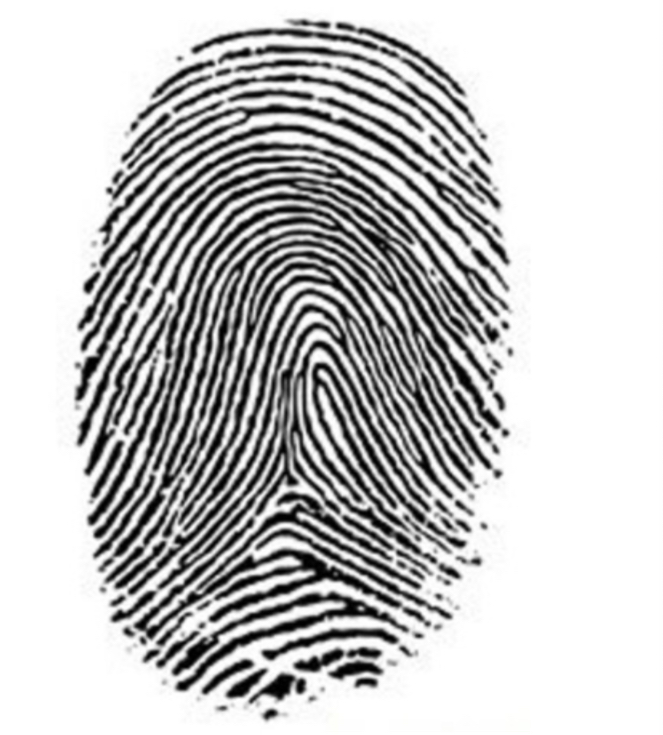
Arch
Ridges that enter from one side and exit from the other side with a rise in the center
Simplest type of fingerprint
No delta is present
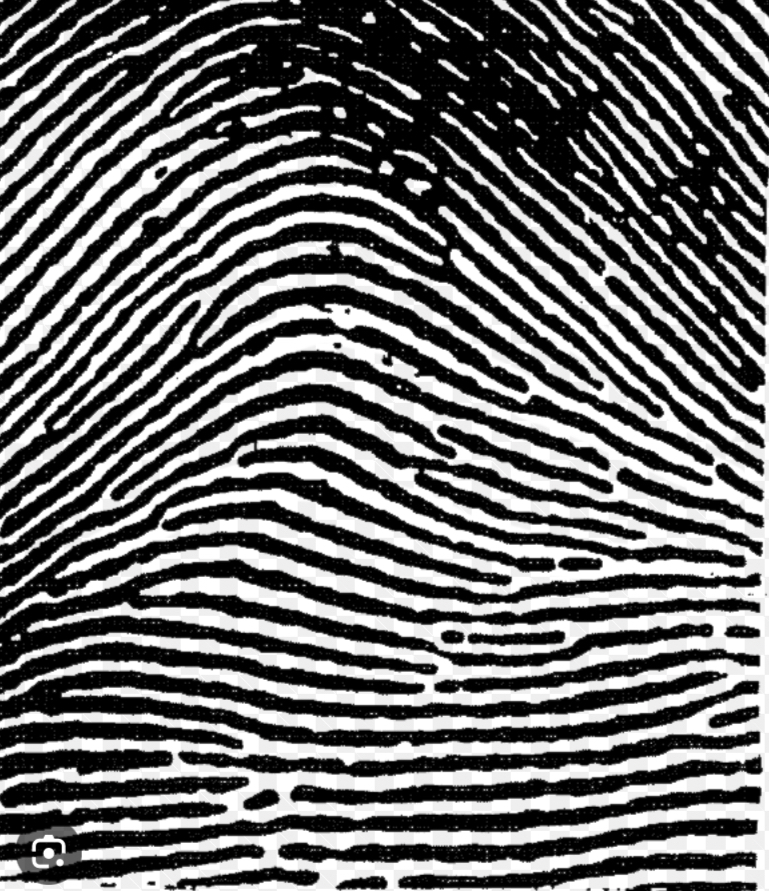
Whorl
Ridges will form a bull’s-eye appearance with a core at the center
Have at least one ridge that makes a complete circuit
Most diverse type of print
They also have at least 2 deltas
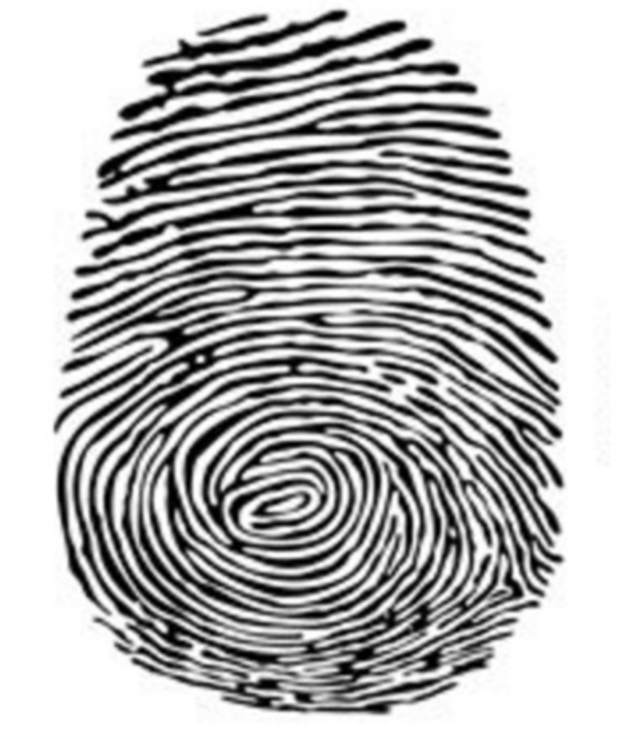
List the 2 types of loop
Radial loop
Ulnar loop
Radial loop
Open towards the thumb or the radius
1 delta
Ulnar loop
Open towards the pinky finger or the ulna
1 delta
Why is it important to know which hand (Right or left) the print came from when determining the loop pattern
Because radial and ulnar loops depend on the hand’s direction
Radial loops open toward the thumb side, and ulnar loops open toward the little finger
Knowing which hand it is tells you which side is which
List the 2 types of arch
Plain arch
Tented arch
Plain arch
Raise in the middle with ridges entering and exiting both sides
No delta
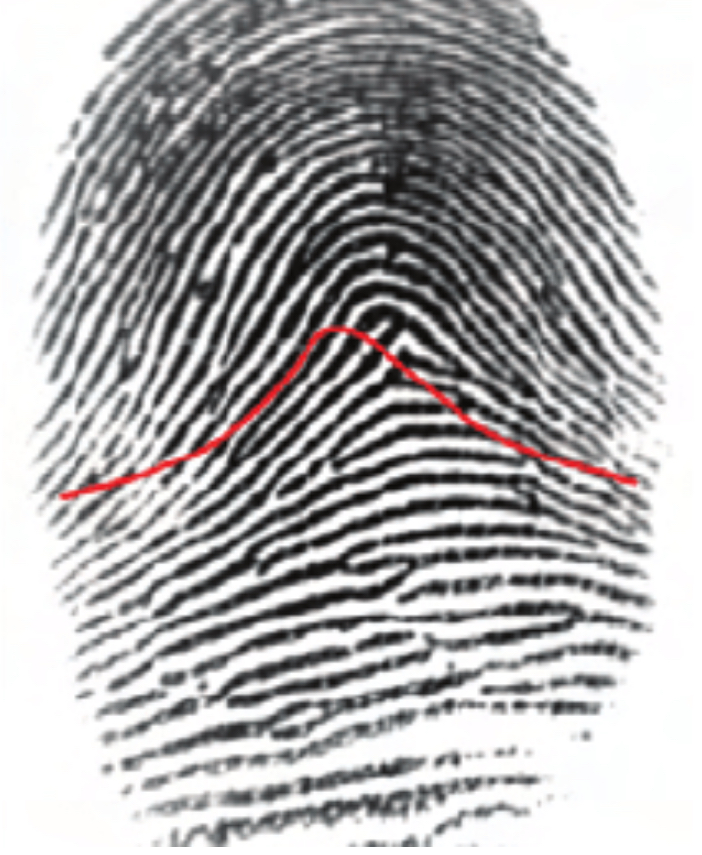
Tented arch
Sharp rise the center of the ridges
1 delta
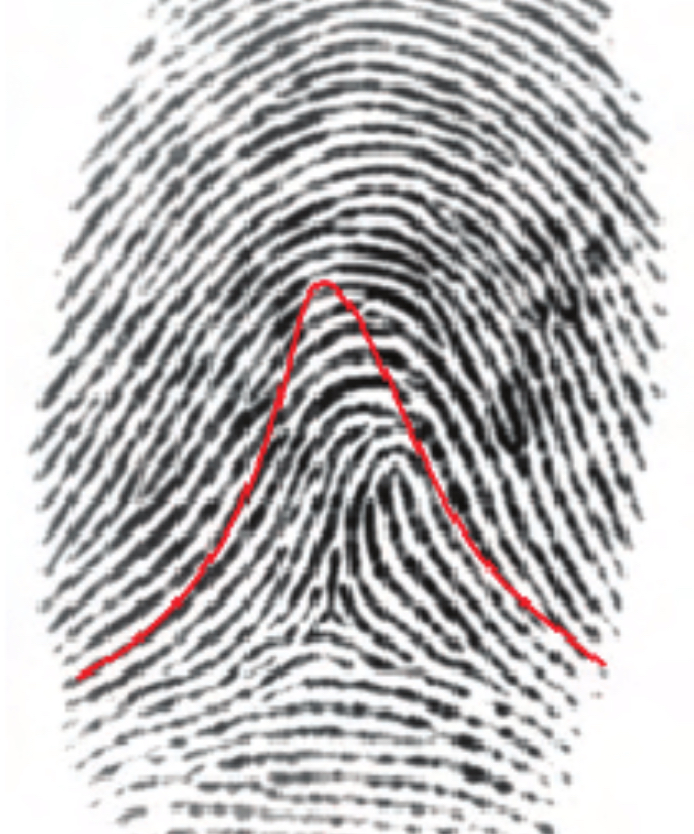
List the 4 types of whorl
Plain whorl
Central pocket whorl
Double loop whorl
Accidental whorl
Plain whorl
Deltas intersect the ridges
One or more ridges that make a complete spiral
2 deltas
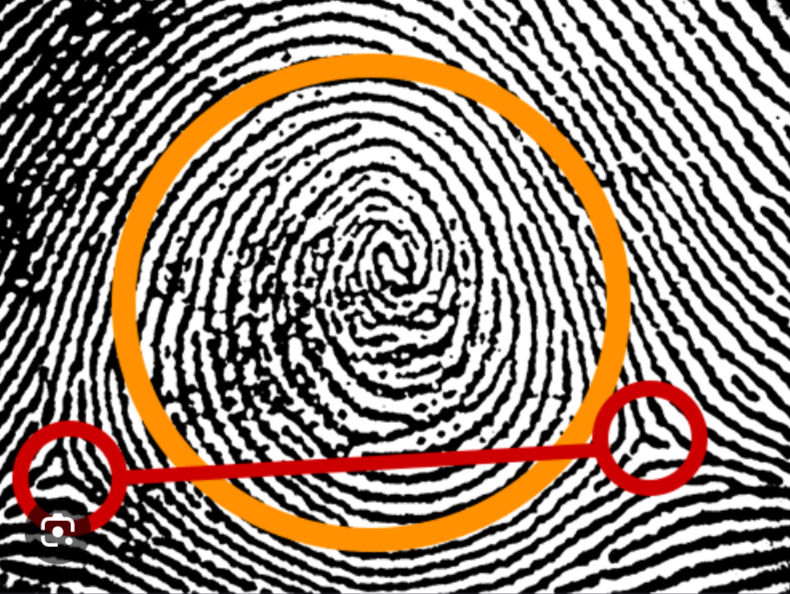
Central pocket whorl
The deltas do not intersect
One or more ridges that make a complete spiral
2 deltas
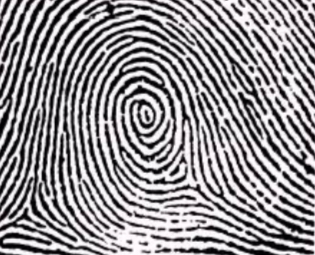
Double loop whorl
Made up of any 2 loops combined into one print
2 loop formations
2 deltas
Looks like an “s”
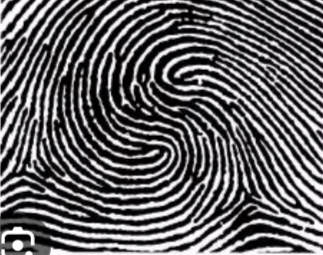
Accidental whorl
2 or more deltas and a combination of other 2 patterns
The other patterns cannot be a plain arch
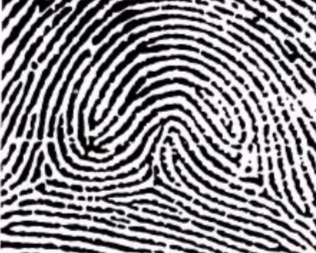
Delta pattern
Triangular ridge pattern
We are ridge patterns diverge or change direction
Can be seen in all 3 basic ridge patterns of fingerprints
What is meant by the ridge count of a fingerprint
Number of ridges between the core and the center of the delta
How is the ridge count determined
A line is drawn from the center of the loop to the center of the delta and the number of ridges are counted
Minutiae
Unique ridge characteristics of fingerprints
Everyone has a unique minutiae
How are minutiae like on each hand
Different on right and left hand
Fingerprint identification
Recognizing minutiae, their number, and location
How many individual ridge characteristics are on a fingerprint
150
What do examiners need to determine
If its a partial print, multiple prints, or a print from right or left hand
Incipient ridge
It looks lighter and less developed, often forming early or partially during fingerprint growth
Under developed bridges that may or may not show print, depending on the pressure the owner of the fingerprint had applied
List the 7 different aspects of the print that will be analyzed by specialist
Creases
Minutia
Scars
Tolerance
Size and shape
Anatomical region
Ridge flow
Ending ridge
Picture

Island ridge
Picture

Fork
Picture

Dot
Picture

Bridge
Picture

Spur
Picture

Eye
Picture

Double bifurcation
Picture

Delta
Picture

Trifucation
Picture

How many minutiae are required to confirm a match on a finger
8
How many minutiae are required to confirm a match on a palm
10
How many minutiae are required to confirm a match on a toeprint/footprint
12
Percentage of people with loops
60%
Percentage of people with whorls
35%
Percentage of people with arches
5%
FBI
Federal bureau of investigation
BCI
Bureau of criminal investigation
CODIS
Combined DNA indexing system
AFIS
Automated fingerprint identification system
Speeds up fingerprint matching
How many prints are currently stored AFIS
Over 70 million prints
Anthropometry
Study of human body measurements
Why would a person have their prints in the AFIS system
If arrested
Employed by government
Background check
What is RUVIS
Uses UV light to find prints without powder
It uses ultraviolet light to spot prints without any powder or chemicals, letting investigators find and photograph fingerprints quickly without damaging them
Describe the steps of superglue fuming to reveal a latent fingerprint
Place the object with latent prints in a sealed chamber
Heat a small amount of superglue so it gives off vapors
The vapors react with the moisture and oils in the fingerprint
A white, visible print forms on the surface
The developed print can then be photographed or dusted for clearer detail